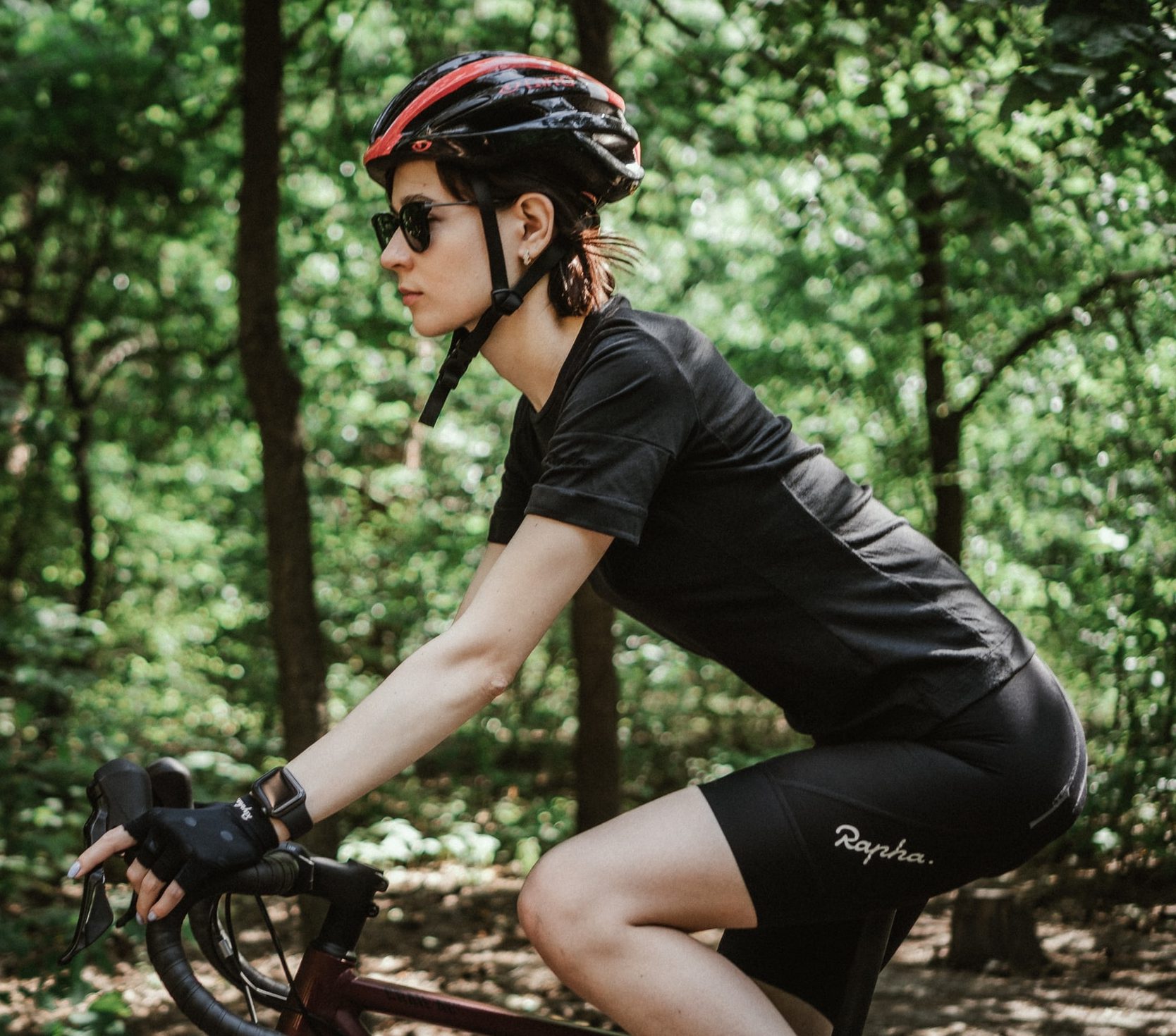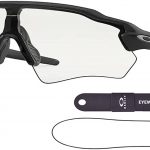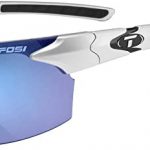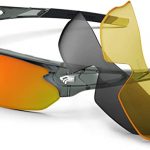When riding mountain bikes on rough trails, protecting your eyes should be a top priority. Getting hit in the eyes by bugs, dirt, sticks, and other debris while riding can be extremely unpleasant and even dangerous. But are cycling glasses really necessary? Do they provide enough benefits to be worth the cost and hassle of wearing them?
Key Protective Benefits
Cycling glasses are designed specifically to shield your eyes when biking. Most models have special lenses aimed at enhancing visibility and preventing eye strain. The frames on cycling glasses wrap around the face more than regular sunglasses in order to stop objects from entering your field of view from the sides. Some models also utilize foam or rubber grippers along the edges to create a tighter seal around the eyes.
Wearing quality cycling glasses can greatly reduce the chances of debris, insects, sunlight, and even tree branches from making direct contact with your eyes while riding. They add a vital layer of protection against painful and potentially damaging eye injuries out on the trails. They may not make eye injuries impossible, but they certainly help significantly lower the risks.
Many rides take place far out on trails through wooded areas. Eyes may feel protected by a bike helmet and goggles. But smaller debris can still enter from angles a bike helmet doesn’t shield. Quality cycling glasses address this issue by surrounding eyes in light yet impact-resistant framed materials. This allows them to deflect or absorb contact from bits of dirt/grit kicked up by the front tire, overhanging branches, and more unpredictable elements.
Well-chosen cycling glasses truly feel like an extension of your helmet and the gear protecting the rest of your body when riding. They integrate coverage which addresses eye exposure issues a helmet alone can’t account for. So while it takes an extra step to put them on, that small effort pays off quickly once you start racking up the fast-paced miles on a ride.
Enhancing Trail Visibility
In addition to protection, cycling glasses also aim to provide optical enhancements to help you see the trail ahead more easily. Most models allow you to swap out lenses to match different lighting conditions. Clear lenses work well on overcast days, while amber, brown, or yellow lenses improve contrast on sunnier days. And almost all cycling glasses lenses offer 100% UVA/UVB protection against harmful rays.
Some lens options also utilize innovative technologies to further assist with trail visibility. Brands like Oakley and Smith Optics offer lenses with enhanced contrast, depth perception, and color definition. While not necessary, these visual support features allow riders to spot roots, rocks, and changes in terrain more easily at speed.
Because mountain bike trails wind through wooded areas, light conditions can change rapidly. One moment you’re in bright sunlight, then quickly under shade a moment later. Quality lenses made for cycling flux conditions quickly adjust to keep eyes from straining at these shifts. This also helps prevent the need to remove glasses frequently to a less protected view when part of the trail grows darker.
Advanced lens materials enhance visibility to address issues specific to mountain biking too. Their ability to heighten detail and terrain distinction assists with identifying curves, obstacles like roots/rocks, and gradations in soil as trails change. These visual assists become incredibly valuable when riding at faster paces. That split-second edge at seeing the ever-changing path ahead eases mental processing and body reaction times.
Fatigue and Strain Reduction
Staring forward along mountain bike trails for hours at a time can take a real toll on your eyes over longer rides. Eyestrain, dryness, irritation, and overall fatigue can set in. Quality cycling glasses help counter these issues by blocking excess sunlight and wind from drying your eyes out. The glasses themselves also prevent you from having to squint, which contributes greatly to tired eyes.
Beyond eye protection and enhanced trail visibility, this helps you simply see better further into your ride. You may not even feel significant eyestrain when riding without glasses. But once you try cycling specs designed specifically to keep eyes fresh, you’ll notice a clear difference in how your eyes hold up over extended distances. The comforting fit and coverage cycling glasses provide results in greater endurance and capacity to process what’s on the trail ahead.
It’s easy to dismiss eye comfort and stamina while prepping for a ride. But once deep into mile 20 or 30 of a long day covering 50+ miles, eyes take a beating. Quality cycling glasses address this. Features like rubber sleeves, foam, and adjustable pads allow frames to fit snug to different riders’ facial contours. This blocks excess particles and light from hitting eyes directly and tiring them out prematurely. Less strain over time keeps eyes stronger.
Small design choices make a difference too. Vents cut along frame edges alleviate sweat build-up. Adjustable nose pads further customize fit comfort so glasses stay securely in place without sagging. And lenses with just a hint of tint enhance definition while avoiding heavy tint levels that could strain eyesight in shaded areas. Each element combines to maintain fresh eyes for assessing trail conditions longer.
Comfort and Practicality Needs
While designed for eye protection and visibility, not all cycling glasses excel when it comes to comfort and practicality. Poorly designed glasses can be distracting if they don’t fit your face well or lack the right kind of padding along contact points. Decent glasses should be light enough and make use of rubber grippers and adjustable nose pads to customize a secure fit that stays put.
It’s also wise to consider glasses with easily interchangeable lenses. Being able to switch between lens colors and types without needing tools can be hugely advantageous depending on trail conditions and light levels. However, watch out for models with brittle frames or overly complex lenses that are prone to breaking or scratching. Paying more upfront for durable cycling glasses built to last is often worth avoiding continual replacement costs over time. Think about glasses optimized for your most common trail types as well.
Even if highly protective and assisting vision, uncomfortable cycling glasses defeat their own purpose over longer rides. If they lack appropriate frame ventilation, sweat more easily, or don’t contour well – wearing them ends up being more trouble than help. Unfortunately finding the right balance between practicality and high-performance qualities in glasses takes some investment upfront.
But now many quality affordable options exist too with practical features rivaling far more expensive glasses. Mid-tier cycling glasses still deliver excellent multi-terrain visibility, eye comfort, and staying power. So ultimately deciding which price range hits the ideal balance for you takes some consideration – but doesn’t mean needing top shelf prices. Entry-level cycling glasses often gain ground significantly on premium versions beyond marketing hype. Know your needs and research wisely.
Premium Quality vs. Price
Higher-end cycling glasses from well-known brands certainly offer premium features and quality. But mid-range and budget glasses have improved vastly over the years as well. Cutting edge designs, foam padding, durable frame materials like TR90 nylon, and advanced lens tech can be found today even among more affordable glasses.
So while famous brands still excel when holding nothing back at the highest price points, there are plenty of suitable options now among more modestly priced cycling glasses. Determining the right balance between cost and value for your needs takes some research. But ultimately, finding glasses with foam/rubber padding, durable frames/lenses, secure fit adjustments, decent ventilation, and interchangeable lenses doesn’t have to mean spending a small fortune. Even entry-level cycling glasses provide great protection and optics versus wearing no glasses at all.
Boutique brands push the limits of cycling eyewear technology…along with their legendary prices. And there’s no doubt top companies like Oakley and Smith Innovate constantly. Their elite glasses offer best-in-class clarity, coverage, materials, integration with helmets, and style. But is that level vital for most riding purposes?
For many cyclists, more economic pairs deliver sufficiently. Lesser-known brands apply comparable lens coatings, ventilation, padding, and coverage taking their lead from premium trendsetters. Unless competitively racing, strong mid-market glasses meet most average riding demands at a palatable cost. Even starting-level cycling glasses give needed facial protection over wearing none for moderate riders. Determine what technology matters most for the bulk of your rides when weighting pricing. High-end glasses always tempt, but evaluate critically if that tier exceeds necessities.
Key Advantages Summarized
Quality cycling glasses tailored for mountain biking check the essential boxes of protecting your eyes, aiding visibility, reducing eyestrain over longer rides, and providing durable/comfortable fit. While premium cycling glasses can utilize cutting-edge technologies and materials to enhance vision and durability, mid-range options today also offer excellent eye protection versus wearing no glasses.
For most riders, having secure-fitting glasses with quality padding, lens interchangeability, and durable frame construction makes purchasing cycling glasses well worth it. Protecting your eyes against discomfort, injuries, and fatigue can literally help you see the trail ahead more clearly while also simply enjoying the ride. So consider cycling glasses an essential investment – your eyes will thank you over miles of mountain biking adventure!






